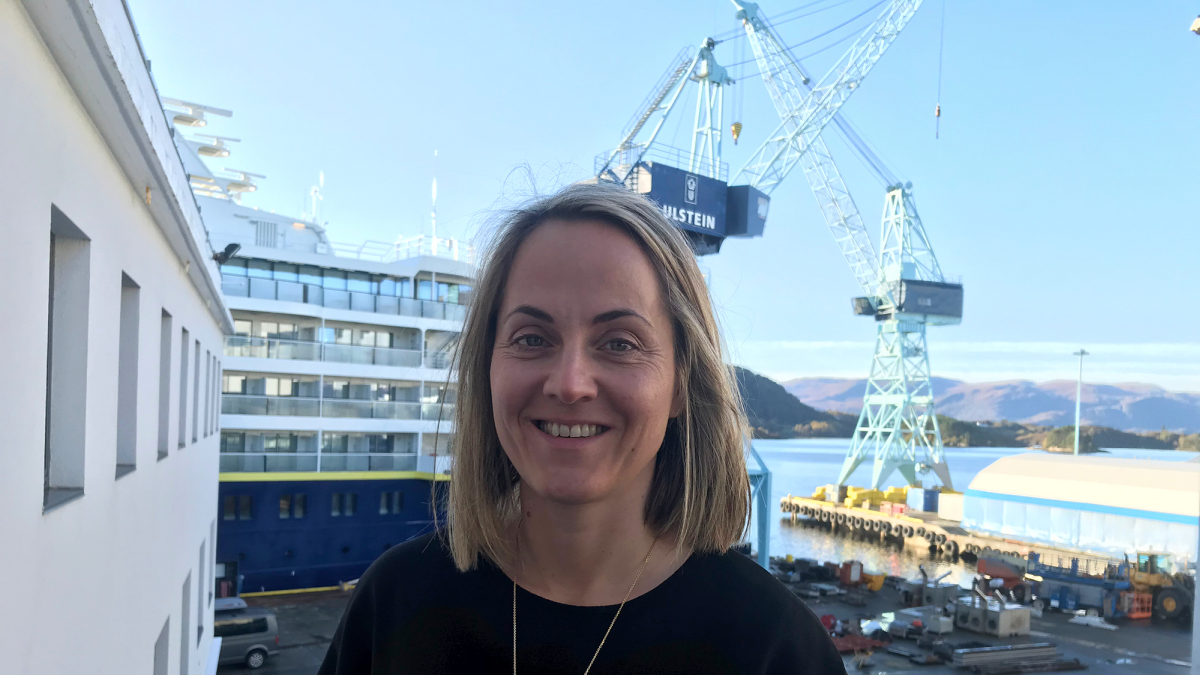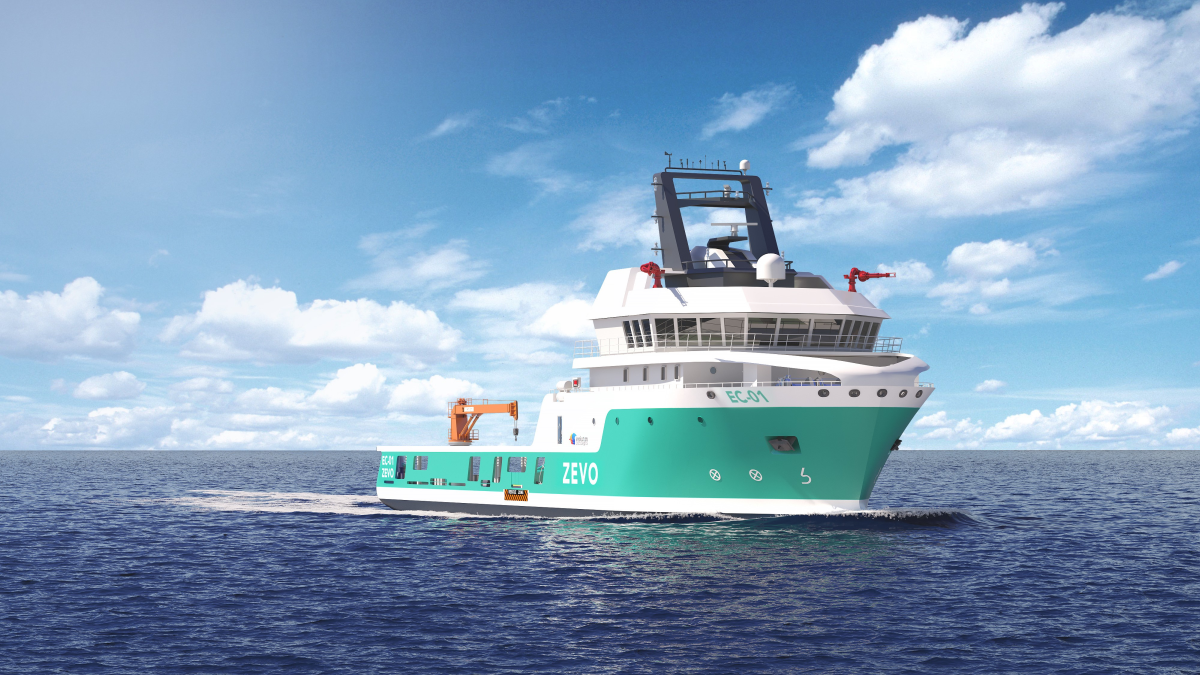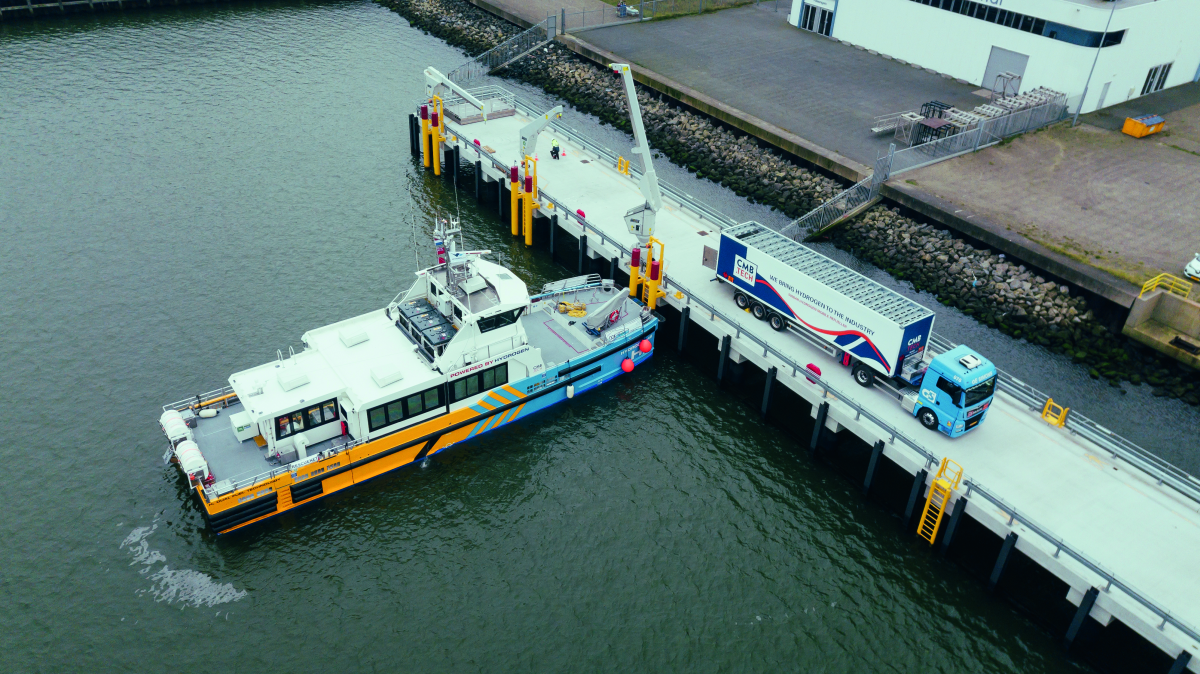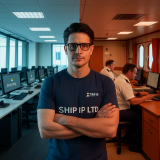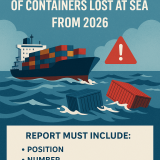Nuclear power for offshore vessels: not ‘pie in the sky’
September 14, 2022 GENERAL
While charter rates in the offshore oil and gas sector do not yet justify newbuilding orders, leading OSV designers and shipbuilders are hard at work drawing up plans for a new generation of vessels that will be operationally flexible, safer, more manoeuvrable and less carbon intensive.
Given environmental demands and fuel costs, fuel efficiency and low or even zero emissions are at the top of charterers’ lists. Pilot projects and retrofits using hydrogen, methanol, ammonia, batteries and fuel cells are already underway in the offshore energy sector. The hydrogen-powered crew transfer vessel (CTV) Hydrocat 48, for instance, is being used to transport crew to and from offshore windfarms for construction and maintenance activities. The vessel sails from Ijmuiden in the Netherlands, but the vessel’s normal operational activities – the maintenance of 44 Vestas turbines for Belgian windfarm Norther – are based out of the port of Oostende, Belgium.
“The bottleneck is the development of the MSRs for vessels”
Owner Windcat Workboats says it wants to use more hydrogen-powered vessels in the future. Hydrocat 48 takes the Windcat Mk 3.5 design and enhances it with dual-fuel engines supplied by MAN Engines that are capable of burning hydrogen. CMB.TECH has taken a MAN dual-fuel engine (the MAN D2862 LE428) and retrofitted it with a hydrogen injection system.
The nuclear option
Beyond hydrogen, methanol, ammonia, batteries and fuel cells, are there other options for owners? Torill Muren thinks so. Ms Muren, lead naval architect for Ulstein Design & Solutions, thinks the industry should be considering nuclear power.
In April, Ulstein unveiled an X-bowed, nuclear-powered offshore vessel concept, Thor. The 149-m all-purpose replenishment, research and rescue (3R) vessel is powered by a thorium molten salt reactor (MSR).
“We have the goals, ambition and environmental imperative to switch to zero-emission operations, but until now we haven’t had the solution,” says Ulstein Design & Solutions CEO Cathrine Kristiseter Marti.
Ms Muren explains: “Thor essentially operates as a floating, mobile, multi-purpose power station that never needs refuelling. [Thor] instantly creates the ocean infrastructure required to facilitate a new battery revolution. The immense power of the reactor would offer sufficient charging capacity to meet the needs of four expedition cruise ships such as the Ulstein Sifs, as well as providing research facilities for polar operations and acting as a rescue vessel for remote regions where there is simply no emergency response capacity.”
“There is an increasing interest in more capable vessels that make transfers more efficient and safer”
The Ulstein Sif is another concept, a 100-m, zero-emission expedition cruise ship that will run on next-generation batteries. Thor would recharge the cruise ships while they are at sea.
Ms Muren says Thor is “the missing piece of the puzzle when it comes to enabling safe, sustainable operations, anywhere on Earth. As such, it really does have the capability to transform our industry.”
As for the fuel, pending the introduction of charging infrastructure, reactors could certainly become the juice of the future, argues Ulstein’s chief designer Øyvind Gjerde Kamsvåg. For evidence that revolutions can happen, he cites the rapid adoption of electric cars in Norway, where in January 2022 no less than 84% of all new cars sold were electric. “Thor, or a concept like it, is the solution for establishing that same charging infrastructure at sea,” he believes, highlighting the value of a floating network of MSR-powered vessels that can power green shipping.
But what exactly is MSR? The fuel is created by dissolving thorium – an abundant, naturally occurring metal with low radioactivity – in liquid salt. This creates a chain reaction that heats the salt, producing steam to drive a turbine and generate emission-free electricity.
MSRs are considered safer than conventional reactors, using solid fuel. Because the fuel they use is already in a molten state, it can be drained away in the event of an emergency, preventing the feared nuclear meltdown and hydrogen explosions that occurred, for instance, in the Fukushima disaster. Also, MSRs operate at or near atmospheric pressure, which reduces the requirement for large and expensive pressure vessels.
However, the economic feasibility of MSRs is not well known, mainly because it is largely undeveloped. Also, it has yet to be incorporated into a proper vessel. On the bright side, there has been a burst of research in the last few years and projects are under way in several countries, notably Canada, the US and China.
Far from being rejected as pie in the sky, Ulstein says that class societies back the concept and are already drawing up approvals-in-principle and white papers. The Norwegian Research Council has just allocated funds that could kickstart the revolution. The money has been given to the Norwegian University of Science and Technology for work on a maritime nuclear power project.
It is not as though nuclear-powered shipping, although not MSR power, is new. Aircraft carriers and submarines have relied on nuclear power for decades.
If Ulstein’s purpose was to stir up interest in nuclear powered, offshore charging stations, it has worked. “We are still on a conceptual stage where the bottleneck is the development of the MSRs for vessels, as well as the solid-state batteries for the battery-powered vessels,” Ulstein tells OSJ. “At this stage, we are getting interest among players in the overall maritime industry, ranging from classification societies, flag states, suppliers, researchers, and ship-owning companies. We are in discussions with several of these players and can unfortunately not go further into detail on this,” it says.
Although a naval vessel does not have to meet the same cost constraints as a commercial, all-purpose OSV like Thor, the time may soon come for the concept if thorium-powered reactors jump through all the regulatory hoops. Certainly, Ulstein’s Mr Kamsvåg believes a fleet of Thors could be in action within 10 to 15 years “at a conservative estimate”.
In the absence of a nuclear revolution, the shipping industry continues to extract improvements in the design, power and convenience of offshore vessels that make life easier for crews and deliver more efficiencies for operators.
Malaysia targets zero-emissions OSV
A consortium of Malaysian and Singaporean maritime stakeholders believes they can deliver those green efficiencies in a newly developed all-electric, zero-emission OSV that is intended to be the first of a fleet that would be built in Malaysia.
Construction on the US$25M vessel, to be named Zevo, is due to start in 2023 in a strategic partnership comprising three shipbuilding and ship repair companies in Malaysia: Grade One Marine Shipyard; Muhibbah Marine Engineering; and Shin Yang Shipyard. Design will be headed by Evolution Concepts together with partners such as Gennal Engineering, MacGregor, Raytheon Anschuetz Singapore and Sindex Refrigeration.
The vessel will be powered by Gennal Engineering’s Blue G battery system. Its capacity will be calculated based on the vessel’s total power requirement and will charged by generator sets on board, as well as by any sustainable solutions onshore.
The consortium was facilitated by the Malaysian Government. “Action plans are drawn to mainstream the adoption of ESG in industries in line with our nation’s aim to be net zero carbon in 2050 at the earliest,” said theMinistry of International Trade and Industry (MITI) deputy secretary general, Datuk Seri Norazman Ayob.
This new-generation OSV will be designed to ABS Rules and supported by ABS Engineering in Singapore, one of the class society’s largest engineering teams outside of the Houston headquarters.
Malaysia already has a big track record in OSVs, having built more than 100 up to 2021. According to the government, there are around 420 OSVs operating in Malaysian waters.
Among several clear advantages are a much-reduced life-cycle cost for the generator sets, because most of the power will come from the batteries, as well as related lower fuel consumption. The project promises more to come: “As the technology advances, there will be more sustainable solutions for the main generators to complement the battery system,” predicts Evolution Concepts managing director Kelvin Chong.
Evolution Concepts, which will see through the whole process from design and engineering to pre-commissioning and testing before delivery, is already at work on what it seen as a landmark project. “We are still using the existing hull vessel’s design,” the Singaporean group tells OSJ, citing a more conceptual approach. “We are evolving away from the traditional shipbuilding mindset of naval architect and towards complete marine engineering. Evolution Concepts has developed a process and shipboard operation-driven mindset in optimising the power requirement for the vessel.”
“Thor is the missing piece of the puzzle when it comes to enabling safe, sustainable operations”
The early numbers run by Evolution Concepts suggest substantial economies. “We have calculated that the Zevo design can improve fuel and emission savings by up to 25-30% during 100% maximum continuous rating operation and 100% savings during zero-emission modes when compared to an equivalent bollard-pull diesel-mechanical conventional vessel,” the designer says. “That’s based on information from the owner’s operational profile and from the data sheet of the equipment manufacturer.”
However, without government support, the commercial viability of the project could be in doubt, at least temporarily. According to sources, current daily charter rates are such that a Zevo-type vessel could be uncommercial.
But it is highly possible the situation could change by the time the vessel is launched, probably in 2024.
Increased investment in crewboats
Elsewhere, Singapore-headquartered Strategic Marine has delivered a 42-m fast crew boat (FCB) to Centus Marine that pushes the design envelope of this type of vessel further, after several years of under-investment in new tonnage in this sector.
“We are finally seeing an increase in demand from offshore operators for crewboats,” Strategic Marine tells OSJ. Among the reasons for this, notes the Singaporean shipbuilder, are “an ageing fleet, a higher oil price, and increased focus on safety and comfort for crew and offshore personnel.”
Additionally, emerging opportunities in the offshore renewable sector are driving increased fleet investment. “Many offshore operators are also diversifying their services into the offshore wind segment and they are seeing increased fleet utilisation. Hence the need for new and specialised vessels,” says Strategic Marine.
Delivered in July, Centus Marine’s new 42-m FCB incorporates several features to enhance safety and efficiency. Among these are a bow tunnel thruster to help in station-keeping and manoeuvring, bow boarding, an enlarged wheelhouse and a big deck storage area with wide walkways to ensure that crew can get on and off when the weather turns nasty.
There is a generous amount of space, too. The vessel boasts a capacity for 100 personnel in business-class recliner seats, complete with their own luggage racks and an accommodation area that offers 12 berths in seven cabins. And it is fast. In sea trials, the FCB cruised at 30 knots, powered by three V12 Cummins KTA50 main engines.
“The Zevo design can improve fuel and emission savings by up to 30%”
Refinements to the hull make it more efficient than previous generations. “The design has a reduction in resistance of 8% compared with our third-generation hull form, which was already class leading,” says Strategic Marine. “Given the high cost of fuel now and in the future, along with the relatively long life span of these assets of around 25 years, this is a significant saving for the operator and charterer,” it adds.
Anxious to get the most out of their assets, charterers also want to see gains in what used to be called ‘time and motion’, reports Strategic Marine. This has led to an “increasing interest in more capable vessels that make transfers more efficient and safer. This reduces vessel turnaround times, which in turn further reduces costs,” it says.
This is where relatively new technologies, such as gyro stabilisers and walk-to-work gangways, play an increasingly vital role in the all-important issue of crew safety. ”When combined with suitable vessel platforms, they offer significant benefits for operators in a safer, more comfortable and efficient solution to charterers,” the shipbuilder explains.
As offshore activity increases, faster FCBs will provide more competition for rotorcraft. “We are also seeing strong interest in reducing crew transfer costs by replacing helicopters in medium-distance fields with faster vessels,” says Strategic Marine.
Source: https://www.rivieramm.com/news-content-hub/nuclear-power-for-offshore-vessels-not-pie-in-the-sky-72845

